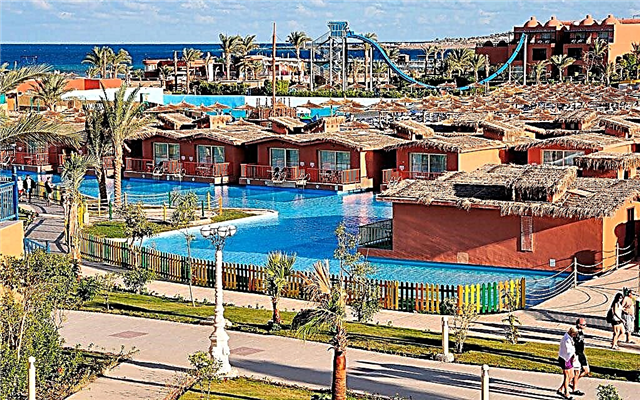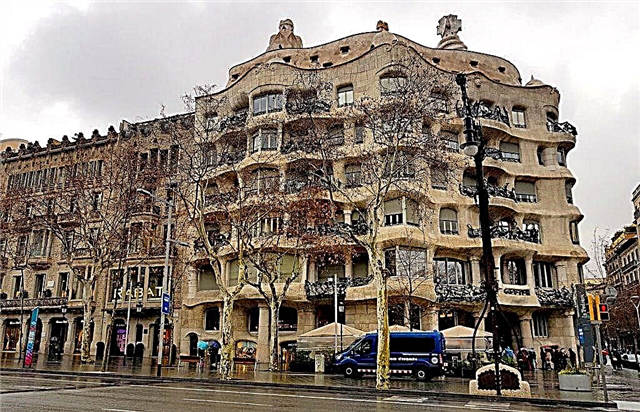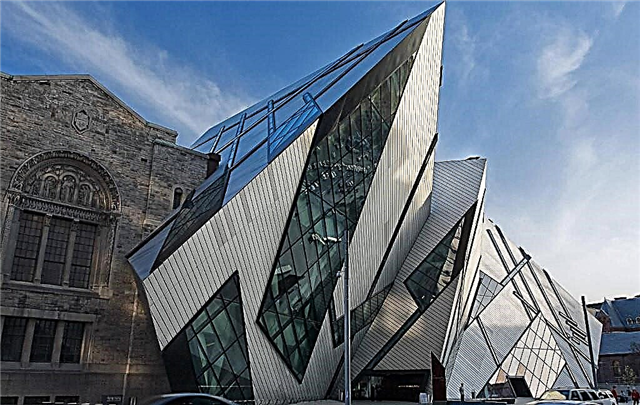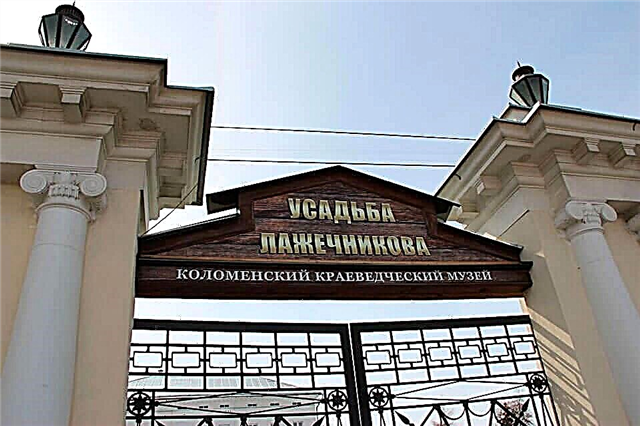Address: Russia, Yaroslavl region, Yaroslavl, settlement Tolga
Foundation date: 1314 year
Main attractions: Cathedral of the Entry into the Temple of the Most Holy Theotokos, Church of St. Nicholas the Wonderworker, Church of the Savior Image Not Made by Hands, Church of the Exaltation of the Holy Cross with a refectory, bell tower, chapel on the grave of the murdered monks, Cedar Grove
Shrines: a particle of the Robe of our Lord Jesus Christ, the relics of St. Ignatius Brianchaninov, a particle of the Nail with which our Lord Jesus Christ was crucified, a particle of the Robe of the Most Holy Theotokos, a particle of the Shroud of Turin, a particle of the Chiton of the Baptist of the Lord John, the revealed icon of the Tolgskaya Mother of God
Coordinates: 57 ° 41'47.8 "N 39 ° 49'38.6" E
Cultural heritage site of the Russian Federation
Content:
Monasteries of Yaroslavl
6 km from the center of Yaroslavl, near the mouth of the Tolga River, there is an ancient monastery - one of the oldest in Russia. Once it was located away from the noisy city, and now it is part of the city boundaries of the sprawling Yaroslavl. Thanks to the ancient miraculous icon, the monastery is very popular with pilgrims. Many also come here to admire the ancient temples and the cedar grove, founded in the time of Ivan the Terrible.
History of the Tolgsky Holy Vvedensky Monastery
Unfortunately, documentary information about the history of the monastery is fragmentary and scarce. For the most part, you can learn about the events that took place within its walls in the texts that describe the miraculous phenomena of the famous Tolga icon.

Tolgsky Svyato-Vvedensky monastery from the side of the pier
An old legend is associated with the founding of the monastery. In August 1314, Bishop Trifon of Rostov, together with several Orthodox priests, traveled to Belozerye. Already on the way to Yaroslavl, they settled down for the night on the right bank of the Volga. At night, the bishop had a wonderful dream about the appearance of the icon of the Mother of God. In the morning, on the other side of the river, in the forest, the servants found a wonderful icon.
Trifon did not return to Yaroslavl. He made sure that a wooden church was built in memory of the miracle, which was consecrated in honor of the Annunciation of the Mother of God to the Temple. The found icon was transferred here. Gradually, a monastery was formed around the new church. They began to call it Togskaya - along the river flowing into the Volga.
It is known that at the end of the XIV century, there was a strong fire in the monastery. Many buildings and the fence of the monastery were burned. The first wooden temple also burned down to the ground. The fire destroyed old books and all liturgical utensils, but the main monastery icon was saved. After the fire, benefactors helped to rebuild the monastery, and the monastic life continued. Many pilgrims always came here, and the Yaroslavl princes provided their patronage to the monastery. So, Prince Fyodor Fedorovich granted the monastery the village of Kukoltsyno, and the peasants who lived there were freed from all princely duties and taxes.

Cathedral of the Presentation of the Blessed Virgin Mary (Vvedensky Cathedral) with a bell tower
The year 1553 is specially marked in the annals of the monastery. Tsar Ivan the Terrible came to the monastery and with long prayers healed from the disease that tormented him. After that, the monastery was under constant royal patronage. Ivan the Terrible made him generous monetary donations, and also presented the icon-painting image of the Savior Not Made by Hands. In addition, the first stone temple appeared in the monastery at the expense of the king.
The times of troubles, from which the 17th century began, swept across the entire Yaroslavl land with fires and robberies. The monastery at the mouth of the Tolga River did not escape a sad fate. 46 monks hiding in one of the temples were captured by an enemy detachment and killed. Later, a memorial chapel was erected over their mass grave.
Fortunately, the priceless Tolga icon was hidden from the invaders. And when in 1612 a terrible pestilence plague broke out in the Yaroslavl region, a procession of the cross around the city took place with the icon. And the disease receded.
Difficult responsibilities for the restoration of the destroyed monastery fell to the lot of its abbot, Abbot Serapion. During these years, a warm Church of the Exaltation of the Holy Cross was erected with the money allocated by the sovereign Mikhail Fedorovich. Today it is the oldest surviving monastery building.

Church of the Savior Image Not Made by Hands
The monastery has never been deprived of the attention of benefactors. It was donated by boyars from the Vyazemsky and Troekurov family, the Golitsyn and Melgunov family. In many ways, the monastery was helped by the wealthy Yaroslavl merchants brothers Semyon Matveyevich and Ivan Matveyevich Sverchkov. They donated not only very large sums of money to the monastery, but also one thousand poods of salt, which was very expensive in those days.
Besides them, the benefactor of the monastery was the okolnichy prince Nikita Yakovlevich Lvov. With his funds, a huge 200 pound bell was cast for the newly built bell tower, and clothes embroidered with pearls and precious stones were purchased for the services. Lvov also built stone cells for the monks.
How the monastery looked at the beginning of the 20th century can be seen in the surviving photographs by the famous Russian photographer Sergei Mikhailovich Prokudin-Gorsky. In 1910, he filmed a general view of the monastery and its churches, including from the opposite side of the Volga, the monastery pier, the old cedar grove, as well as the frescoes that painted the gallery surrounding the Vvedenskaya church.
In 1914, the monastery was thoroughly renovated to celebrate its 600th anniversary. However, three years later, when the power in the state changed, the monastery was abolished. Church services in it ceased to be held in 1928, and a year later the monastery was completely closed.

Monastery pond, in the background the Church of St. Nicholas the Wonderworker
In the 30s of the last century, specialists and workers of the Volga hydroelectric power station projected by the government settled on its territory. But after a while the construction site was decided to be moved to Rybinsk. And those residents of Yaroslavl who, for various reasons, did not have their own apartments, remained in the monastery. In addition, a children's educational colony was located here for several decades.
And although in 1947 the monastery was recognized as a historical and architectural monument, the situation has hardly changed. Restorers came to its walls only in the 70s of the last century. And the last residents were evicted from the monastery just before its opening, which took place in 1987.
For the next twenty-odd years, large-scale restoration and restoration work was carried out at the monastery. And now the white-stone walls and the most beautiful temples of the Tolgsky Monastery are rightfully considered one of the pearls of the "Golden Ring" of Russia.

Chapel on the grave of the slain monks
Architectural monuments on the monastery territory
The majestic architectural ensemble of the monastery, which was mainly formed by the end of the 17th - the beginning of the 18th century, is today considered one of the most beautiful on the Volga. The oldest of its buildings, the Exaltation of the Cross Church with a refectory, was erected in 1625. Church services in it are performed in the autumn-winter period.
The central place of the monastery is occupied by the Vvedensky Cathedral, built in the early 80s of the 17th century. It is notable for its rich frescoes painted in 1690. Services in this temple are held only in the summer.
The Church of the Savior appeared in the monastery at the very beginning of the 18th century on the site of a dilapidated wooden church. Its construction served as a reminder of the gift of Tsar Ivan the Terrible - the ancient icon of the Savior Not Made by Hands.
In addition, from the old buildings in the monastery, a very beautiful gateway St. Nicholas Church (1672) and a chapel, erected at the end of the 19th century in honor of the monks killed in the Time of Troubles, have survived.
Cedar Grove of the Tolgsky Svyato-Vvedensky Monastery
In the southeastern part of the monastery territory there is a Siberian cedar grove. Most of the surviving old trees were planted in it in 1810. But according to the monastery chronicles, the first cedar seedlings were donated to the monastery by Tsar Ivan the Terrible, and the arrangement of the grove began in the 16th century. However, the old trees could not be preserved due to fires, wars and civil strife that have occurred over the past four centuries.

Cedar grove
In the cedar forest there is a small elegant chapel, erected in memory of the miracle of the appearance of the icon of the Mother of God to Bishop Tryphon at the beginning of the 14th century. The territory of the grove is fenced off from the winds from the north by a high monastery wall. You can get here only with a guided tour. For all comers, access to the grove is open only once a year - on August 21, on the day of the celebration of the acquisition of the Tolgskaya Mother of God icon.
The current state and regime of visiting the Tolgsky Holy Vvedensky monastery
The modern monastery is an active female Orthodox monastery, where 120 nuns and abbess live. Anyone can enter the territory. Photographing inside the monastery walls is paid and costs 200 rubles, and video filming - 500 rubles.
Services in churches are held daily at 7.00 and 16.00 (in the summer - at 17.00). On Sundays and public holidays - at 8.00 and 16.00. Particularly revered monastic shrines are considered the icon of the Mother of God, a particle of the Lord's Robe, as well as relics belonging to St. Ignatius Brianchaninov.

North gate tower
The monastery territory is very well-groomed, many flowers are planted on it. Black swans live in a small pond, and peacocks are kept in the aviary. The nuns work diligently in their own large vegetable garden. For pilgrims and tourists, excursions are organized around the territory and a small museum of church values. In addition, in the monastery you can dine in the refectory and, if you wish, buy delicious bread and gingerbread, which are baked in a local bakery, and also birch sap. Those who wish, with advance booking, can spend the night in the rooms of the pilgrim building.
How to get to the Tolgsky Svyato-Vvedensky monastery
The monastery is located in the village of Tolga, on the gentle left bank of the Volga.
By car. The federal highway M8 leads from the capital to Yaroslavl. When approaching the city, you need to turn off it onto the bypass road and, when driving, be guided by the road signs to Vologda. A little before reaching the Vologda highway, immediately after the road bridge, you must turn along the sign towards the monastery.
By train. From Moscow to Yaroslavl, express train trains reach in 3 hours 16 minutes. The journey by regular train takes from 4 to 5.5 hours. From the railway station in Yaroslavl, take a trolleybus of the first route to the stop "Krasnaya Ploshchad" and change there to bus No. 21 or minibuses No. 93, 96. Any of these types of public transport reaches the stop "Zheleznodorozhnaya str., Tolgobol village ".

Necropolis
From there they get to the monastery on foot - about half an hour. In summer, from the city pier to the village of Tolga in 40-45 minutes. can be reached by boat. In addition, it is convenient to take a taxi to the monastery.











